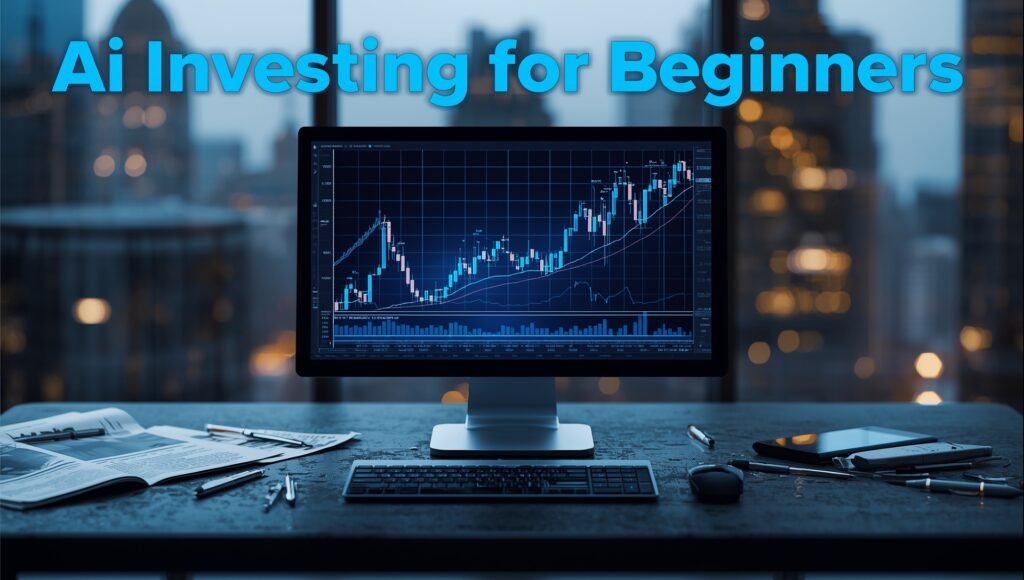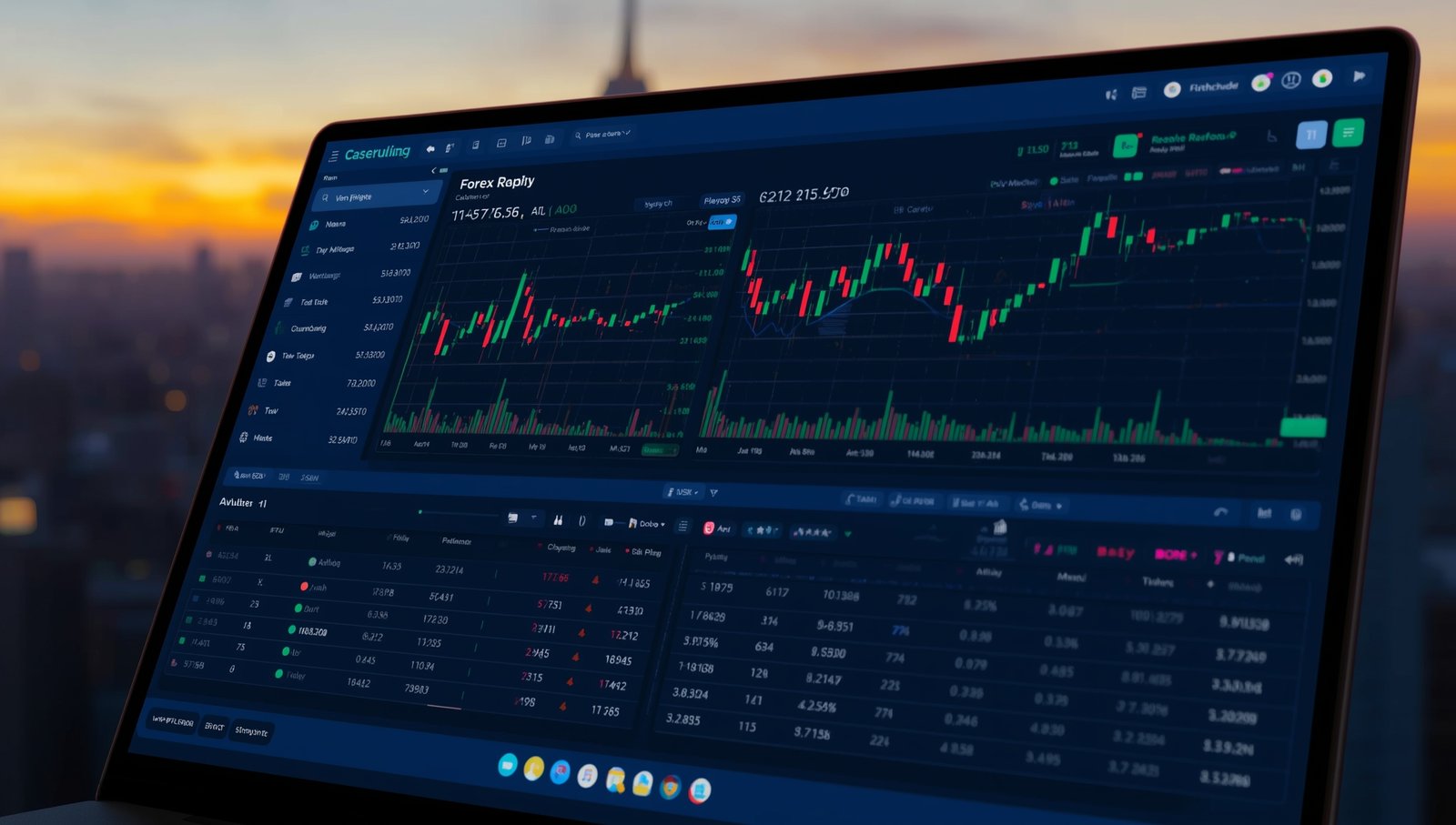The investment landscape has changed dramatically over the past few years. What once required expensive financial advisors and complex market knowledge is now accessible to everyday investors through artificial intelligence. AI-powered trading tools have made it possible for beginners to participate in markets that seemed out of reach just a decade ago.
AI investing uses computer algorithms to analyze market data and execute trades automatically. Beginners can start by choosing a platform, setting risk parameters, and monitoring performance regularly. While AI tools can process data faster than humans, all trading carries risk and past results don’t guarantee future returns.
Understanding AI Trading Technology
AI trading systems use machine learning algorithms to identify patterns in market data. These systems analyze price movements, trading volumes, and other market indicators to make decisions. Unlike traditional investing where you manually research and buy stocks, AI systems can monitor thousands of data points simultaneously.
The technology behind these systems has become more sophisticated. Modern AI trading platforms can process news articles, social media sentiment, and economic reports in real time. This speed advantage allows the systems to react to market changes faster than human traders.
However, it’s important to understand what AI trading is not. These systems don’t have crystal balls or guaranteed strategies. They are tools that follow programmed rules and learned patterns. Market conditions change, and no algorithm can predict every market movement.
Getting Started with AI Bot Trading
Starting with ai bot trading for beginners requires several key steps. Following this process helps ensure you understand the tools before committing significant capital.
Research available platforms: Look for companies that are transparent about their technology and track record. Read reviews from actual users and check if the platform is properly registered.
Start with education: Most legitimate platforms offer educational resources. Take time to understand basic trading concepts like market orders, stop losses, and position sizing.
Open a demo account: Many platforms allow you to test their systems with virtual money. This lets you see how the AI makes decisions without risking real capital.
Set clear risk parameters: Decide how much money you’re willing to risk before you start. Never invest money you need for essential expenses.
Begin with small amounts: Once you move to real trading, start small. This allows you to learn how the system performs with actual market conditions.
Monitor and adjust: Check your account regularly. Most AI systems allow you to adjust risk settings based on your comfort level and market conditions.

Key Features to Look for in AI Trading Platforms
Not all AI trading platforms are created equal. When evaluating options for your ai investing guide, consider these essential features:
| Feature | Why It Matters |
| Transparency | You should understand how the AI makes decisions |
| Risk Controls | Ability to set stop losses and position limits |
| User Support | Access to help when you need it |
| Performance Reporting | Clear tracking of gains, losses, and fees |
| Security Measures | Protection for your funds and personal data |
Platforms like those offering best ai trading bot solutions should clearly explain their algorithms and provide detailed performance histories. Be wary of platforms that promise guaranteed returns or use vague language about their technology.
Common Mistakes Beginners Make
New investors often make predictable errors when starting with AI trading. Avoiding these mistakes can save you money and frustration.
The biggest mistake is treating AI trading as passive income. While the trading is automated, successful investors actively monitor their accounts and adjust settings as needed. Market conditions change, and what works in one environment may not work in another.
Another common error is investing too much too quickly. Beginners sometimes see early gains and immediately increase their investment. This often happens right before a market downturn. Smart investors scale up gradually as they gain confidence and understanding.
Many beginners also fail to understand fees. Even small percentage fees can significantly impact returns over time. Always calculate the total cost of using a platform, including trading commissions, platform fees, and withdrawal charges.
Ignoring risk management is perhaps the most dangerous mistake. Some investors turn off stop losses or maximize leverage to chase bigger gains. This approach can lead to substantial losses. Always maintain appropriate risk controls regardless of recent performance.
Realistic Expectations for AI Trading
Setting realistic expectations is crucial for long-term success. AI trading tools are powerful, but they’re not magic. Understanding what’s possible helps you make better decisions and avoid disappointment.
Professional traders and hedge funds use AI technology, but they still experience losses. No system wins every trade. Successful AI trading is about achieving positive results over time, not winning constantly.
Returns vary significantly based on market conditions, risk settings, and the specific algorithms used. Some periods may show strong gains while others may see flat or negative performance. This is normal for all types of investing.
The time commitment is also worth considering. While AI handles the actual trading, you still need to monitor performance, adjust settings, and stay informed about major market events. Most experienced users spend at least a few hours per week managing their accounts.
Before using any AI trading platform, understand that you’re ultimately responsible for your investment decisions. These tools don’t provide financial advice. You choose your risk levels and decide how much to invest. Past performance never guarantees future results, regardless of how sophisticated the technology appears.
Making Your First Investment
Once you’ve completed your research and feel comfortable with a platform, you’re ready to start. Begin by depositing only what you can afford to lose completely. This might sound extreme, but it’s the safest approach for any type of trading.
Configure your risk settings conservatively at first. Most platforms allow you to adjust how aggressive the AI trades on your behalf. New users should start with lower risk settings until they understand how the system performs.
Keep detailed records of your investments. Note when you started, your initial settings, and any changes you make. This documentation helps you understand what works and what doesn’t over time.
Plan to evaluate your results after a reasonable period. One or two weeks isn’t enough time to judge an AI trading system. Consider reviewing your performance monthly or quarterly, making adjustments based on your goals and comfort level.
Moving Forward with Confidence
AI investing represents a significant shift in how everyday people can participate in financial markets. The technology removes many traditional barriers while introducing new considerations. Success requires education, careful platform selection, and realistic expectations about both opportunities and risks.
Start small, learn continuously, and never invest more than you can afford to lose. The most successful AI trading users treat it as one part of a diversified financial strategy, not a replacement for traditional savings and investments. With proper preparation and reasonable expectations, AI trading tools can be a valuable addition to your investment approach.
Disclaimer: The information provided in this article is intended solely for educational purposes. It should not be interpreted as financial, investment, or trading advice. Cryptocurrency markets are highly volatile and involve substantial risk. Always perform your own research and seek guidance from a qualified financial advisor before making any trading decisions.



